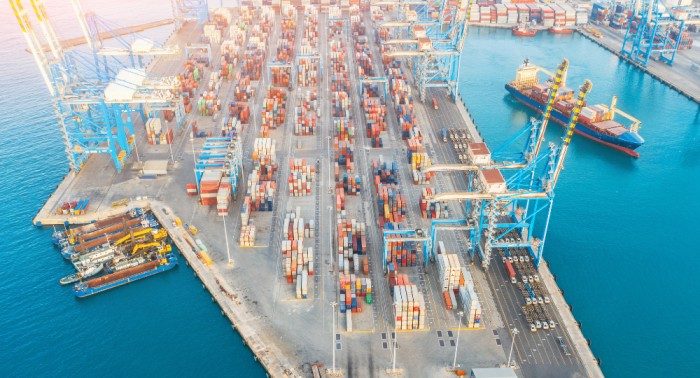There’s no doubt that digitalization can create value for shipping companies, but their initial expectations about Maritime digitalization don’t always match up with reality. Digitalisation involves more than just choosing and installing a software solution, so let’s break down some common misconceptions about what is involved.
Expectation: one software product will solve every problem for each company
Reality: a one-size-fits-all approach isn’t suitable for everyone
Not all generic software solutions will fit a particular shipping company’s needs. Assuming that the needs of every company and every ship can be met by a single universal solution can lead to frustration for everyone involved, from the boardroom to the cadets and everyone in between.
Instead of searching for the “holy grail” that would solve all their problems at once, companies should look for a solution (or set of solutions) that will be adapted to their specific fleet and operational patterns. This will be key to helping companies build resilience in the face of growing unpredictability in shipping, with major variations in operations depending on charter contracts, bunker prices, weather, and port delays, to name just a few. There are also longer-term factors, such as new regulations and developing ESG goals, making it very unlikely that a one-size-fits-all approach will be successful in the long term.
Expectation: the digital transformation is technology-driven
Reality: Digitalization is people-driven
A shipping company can choose the most comprehensive software solutions available, but people remain the ones making decisions and making digital projects successful. Digital solutions can’t deliver results without people. On the one hand, the human expertise of the Opsealog team is essential to “make sense of the data”, and understand it in the specific context of the company, fleet, and operational challenges.
The human factor is also a key element on the client’s side, as people drive change and ensure the smooth implementation of new solutions. As digital solutions are implemented, users should be front and center. We need to listen to their concerns, understand their challenges, and make sure that digital solutions are there to support their work, not the other way around.
This point is demonstrated by our ongoing collaboration with ADNOC Logistics & Services (ADNOC L&S) to optimize the operations of its offshore fleet. Opsealog’s Streamlog, an onboard reporting solution, and Marinsights, a performance management application that is driven by multiple data sources, including Streamlog, have been deployed on over 70 vessels, resulting in fuel consumption reductions of 12% since the project started.
However, it wasn’t simply a matter of considering factors such as vessel speed and engine management to achieve this result. Vessel practices were constrained by safety policies, and the project teams needed to understand current practices from the perspective of the crews and the personnel on the offshore platforms the vessels serviced. While enhanced communication and optimization of vessel speeds did improve efficiency, the Opsealog and ADNOC L&S teams worked together to ensure that the changes implemented did not compromise safety or delay operations.
Expectation: digitalization will be welcomed with open arms
Reality: not everyone will be on board with maritime digitalization
The people in charge of digital projects may understand their benefits, but that doesn’t mean everyone else will. The reality is that shoreside office staff and crews already have to deal with multiple digital interfaces. They often had to undergo training to master these, and they may be reluctant to have to start over again. These digital solutions are also updated routinely, sometimes confusing until new workflows are established. This can create frustration and resentment about new solutions.
So, software solutions for daily reporting onboard vessels should not add to seafarer workload by forcing them to replicate data collected across multiple interfaces. The software should instead facilitate and optimize data entry while also mitigating errors. From there, the data should be able to be integrated and shared automatically, saving time and mitigating errors for shoreside personnel as well.
To ensure this, we need to focus on user experience. Investment in design is essential to ensure that users feel comfortable and familiar with the different KPI reports they are provided with. This will create trust between the data integrator and the company and enable the right organizational culture, in which users are open-minded and willing to test new solutions and new methods of working. This dialogue will also help ensure that solutions are adapted to the operational constraints and realities on board.
Expectation: that digitalization is a one-time effort
Reality: Digital Transformation is a long-term journey that requires continuous effort
Maritime Digitalization is a long-term strategy – whether a company digitizes its financial operations or implements Internet of Things (IoT) functionality to machinery onboard its ships. While it might be tempting to think that digital solutions are plug-and-play and can deliver results instantly, the transformation goes beyond software, deep into the company’s culture. Companies can feel some benefits immediately, but the long-term change holds the most significant potential.
Collecting data and integrating it smartly is only the beginning of a process that enables companies to understand their fleets thoroughly, identify inefficiencies, and act on them. And in our fast-changing industry, they need a clear understanding of market developments as they anticipate challenges and prepare their organizations for the future.
Reality check
Maritime digitalization brings immediate and long-term benefits, and shipping companies should prepare their fleets and crews for a more connected and transparent future. Soon enough, what now seems futuristic will become indispensable if companies remain competitive, so it is essential to take a reality check now. This will ensure the success of digitalization projects and build the foundation for future developments.
GET IN TOUCH

